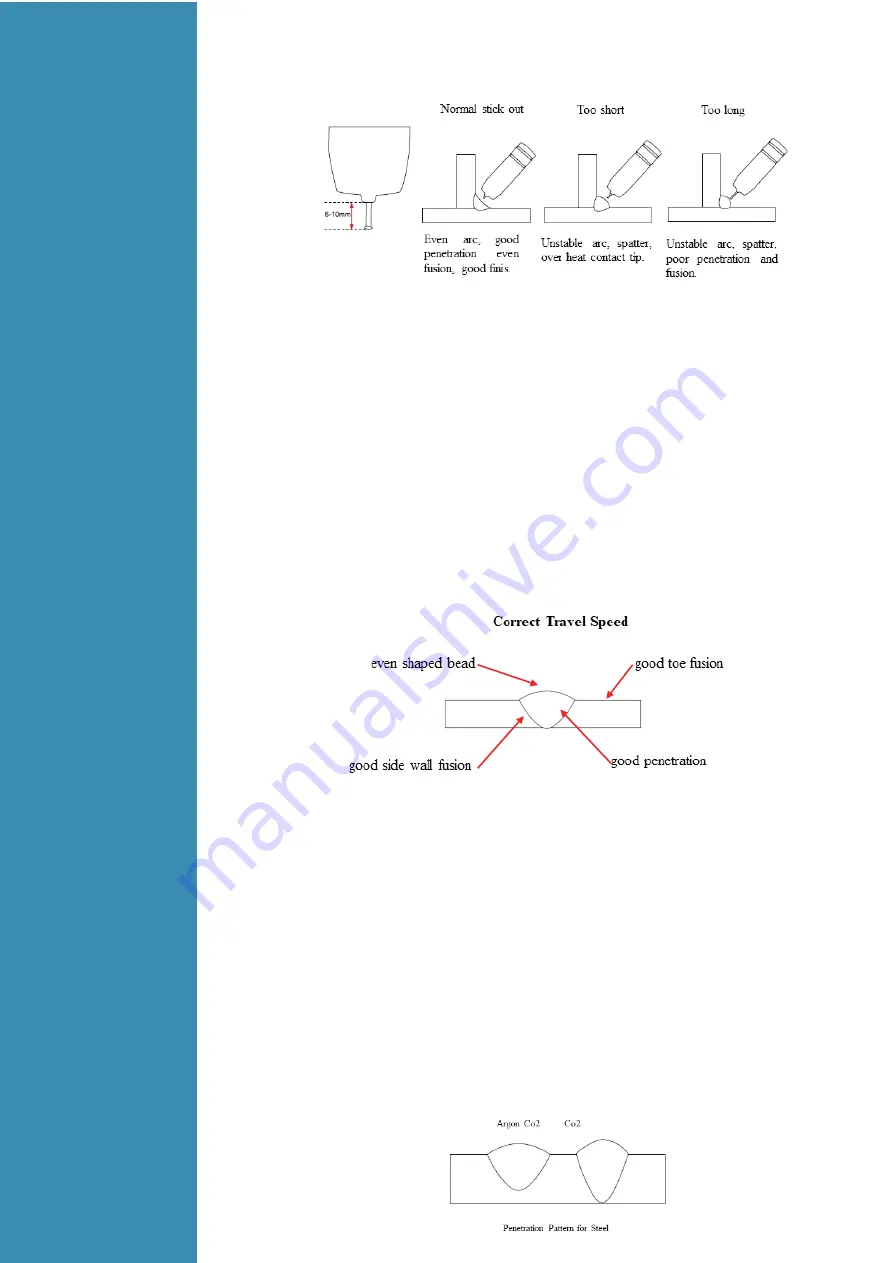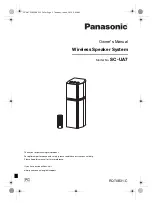
Travel Speed
- Travel speed is the rate that the gun is moved along the weld joint and is usually
measured in mm per minute. Travel speeds can vary depending on conditions and the welders skill and
is limited to the welders ability to control the weld pool. Push technique allows faster travel speeds than
Drag technique. Gas flow must also correspond with the travel speed, increasing with faster travel speed
and decreasing with slower speed. Travel speed needs to match the amperage and will decrease as
the material thickness and amperage increase.
Correct Travel Speed
- The correct travel speed keeps the arc at the leading edge of the weld pool
allowing the base metal to melt sufficiently to create good penetration, fusion and wetting out of the
weld pool producing a weld deposit of good quality.
Wire types and sizes
- Use the correct wire type for the base metal being welded.
Gas selection
- The purpose of the gas in the MIG process is to protect / shield the wire, the arc and the
molten weld metal from the atmosphere. Most metals when heated to a molten state will react with the
air in the atmosphere, without the protection of the shielding gas the weld produced would contain
defects like porosity, lack of fusion and slag inclusions. Additionally some of the gas becomes ionised
(electrically charged) and helps the current flow smoothly.
The correct gas flow is also very important in protecting the welding zone from the atmosphere. Too low
flow will give inadequate coverage and result in weld defects and unstable arc conditions. Too high flow
can cause air to be drawn into the gas column and contaminate the weld zone.
Use the correct shielding gas. Co2 is good for steel and offers good penetration characteristics, the weld
profile is narrower and slightly more raised than the weld profile obtained from Argon Co2 mixed gas.
Argon Co2 mix gas offers better weld ability for thin metals and has a wider range of setting tolerance on
the machine. Argon 80% Co2 20% is a good all round mix suitable for most applications.
Summary of Contents for GRAND MIG 351 MULTI SYN
Page 33: ...4 4 Electrical schematic drawing DRIVER...
Page 35: ...4 2 Troublesho oting...










































